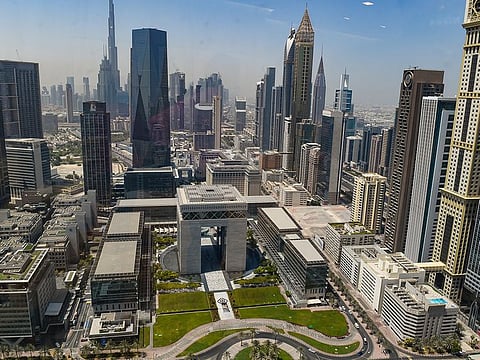Healthy 2021 bank results reinforce UAE’s economic recovery
Analysts see UAE’s economy rebounding faster than expected

Dubai: Financial results of top UAE banks for full year 2021 points to sustained economic recovery supported by key financial sector indicators such as improved credit quality, higher margins, greater profitability and high levels of liquidity that will support future credit growth.
Key financials of banks such as First Abu Dhabi Bank (FAB), Emirates NBD (ENBD) and Dubai Islamic Bank (DIB) showed these institutions maintained strong profitability, high credit quality and improving margins amid challenging economic conditions posed by the pandemic and low interest rate environment.
FAB, UAE’s largest bank reported a full year 2021 Group net profit of Dh12.5 Billion, up 19 per cent on year-on-year and posted an overall credit growth of 6 per cent year on year indicating improved credit offtake.
Mutually supportive
Top banks agree that the continuing government and central bank support to the banking sector is helping both economic rebound and banking sector growth despite the continuing challenges from COVID-19.
“2021 has been a year of strong economic rebound, with unprecedented opportunities for innovation and growth, despite continued uncertainties due to COVID-19. Against this backdrop, the UAE has once again demonstrated great vision and leadership, leading the way towards recovery, regionally and globally, on the back of its world-class vaccination programme, monetary and fiscal stimulus measures including the UAE Central Bank TESS [Targeted Economic Support Scheme] programme, structural reforms and plans to drive long-term economic growth and prosperity,” said Sheikh Tahnoon Bin Zayed Al Nahyan.
Emirates NBD which reported a 34 per cent year on year jump in its net profits to Dh9.3 billion too agree that the recovery in the local economy has been a rewarding experience for the bank and the banking sector as a whole.
“Emirates NBD’s profits grew 34 per cent in 2021 demonstrating the resilience of the Group’s diversified business model. Emirates NBD continued financing the real economy and was rewarded as economic growth rebounded,” said Sheikh Ahmed Bin Saeed Al Maktoum, Chairman, Emirates NBD.
Dubai Islamic Bank (DIB), reported a net profit of Dh4.4 billion for the full year 2021 affirmed that the improved local economic conditions with significant reduction on cost of risk has supported the bank’s profits.
“DIB has successfully navigated through the ongoing economic environment generating a significant 39 per cent year on year growth in net profits,” said Mohammed Ibrahim Al Shaibani Director-General of His Highness The Ruler’s Court of Dubai and Chairman of Dubai Islamic Bank.
Common underlying factors in bank results is significant reduction in loan loss provisions supported by improved economic environment and higher loan yields despite the overall low interest rate environment and relatively slow credit growth. Clearly banks have been able to offset the contraction in interest income with significant gains in non-interest income.
Ahead of the curve
While the full-year bank results clearly point to a strong rebound in the real economy, analysts say the UAE’s economy is rebounding faster than expected. Some of the recent forecasts by the Institute of International Finance (IIF) and the Central Bank of UAE have pegged the UAE’s 2022 GDP growth at 4.9 per cent and 4.2 per cent, respectively.
“We had always expected that the UAE’s recovery from the 2020 pandemic shock would become apparent in the latter months of last year, but the speed with which activity seems to be recovering is running ahead of our expectations,” said Simon Williams, Chief Economist, Central and Eastern Europe Middle East and Africa (CEEMEA) HSBC.
While the banking sector data for the year is reaffirming the faser tahn expected growth rebound, the available high frequency indicators such as job market data, retail sales, real estate, travel and tourism sector data combined with the Purchasing Managers’ Index (PMI) data confirm UAE’s economic recovery in recent months.
“The whole economy PMI has trended sharply higher over much of the third and fourth quarters of the year, consumer sentiment gained, and confidence in job prospects strengthened,” said Williams.
Credit growth
Analysts expect credit growth to pick in the next few quarters as improved economic conditions will prompt higher capital expenditure by corporates. While a gradual rise in interest rates are on the horizon, it is unlikely adversely impact credit growth in the UAE.
Williams said the Fed-driven monetary tightening is unlikely to dent private demand for credit if growth continues to firm and additionally it is the public sector that is likely to lead spending as higher oil prices and rising fiscal surplus encourage governments and state firms ramp up their investment plans.
Sign up for the Daily Briefing
Get the latest news and updates straight to your inbox



